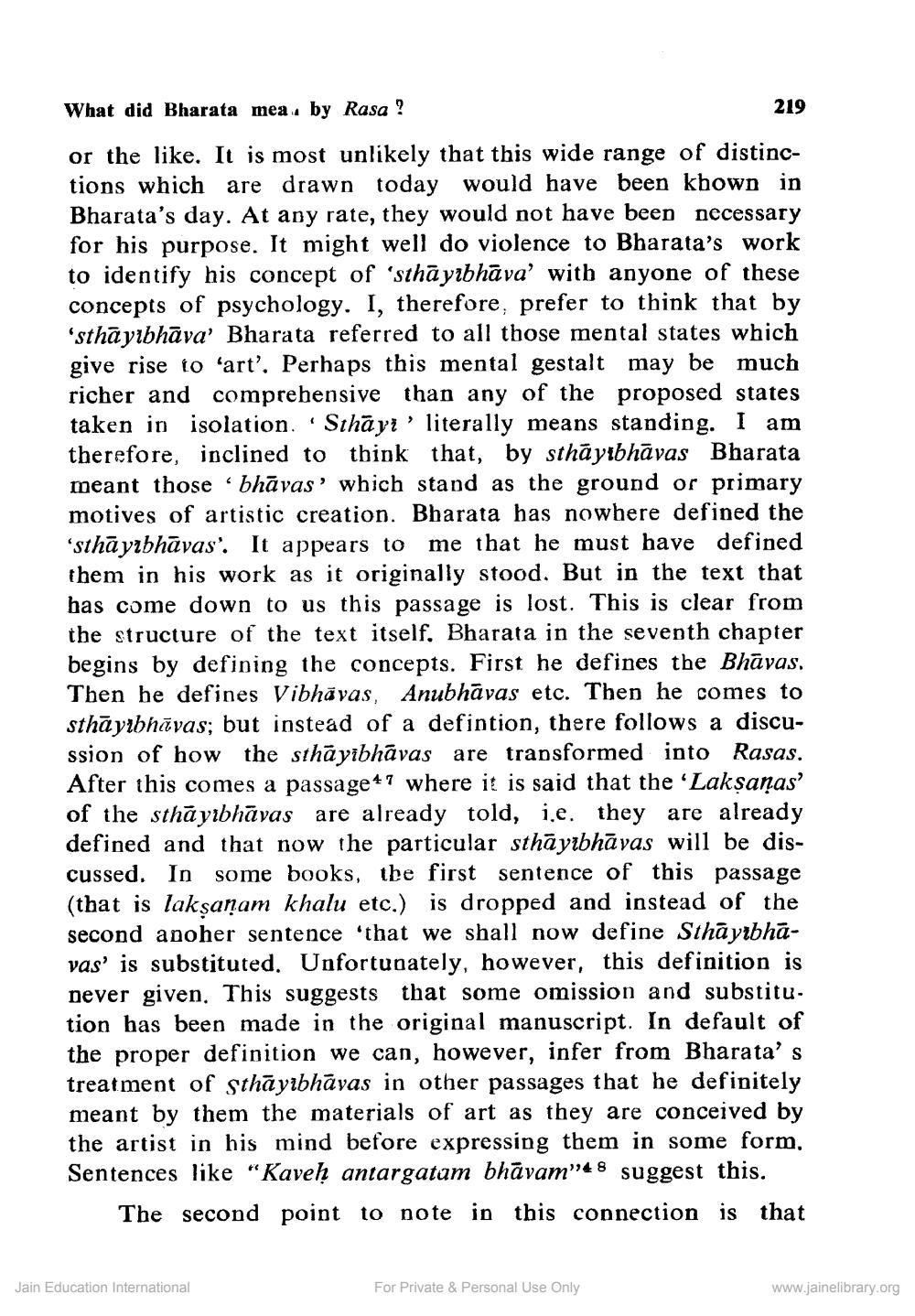________________
What did Bharata mea. by Rasa ?
219 or the like. It is most unlikely that this wide range of distinctions which are drawn today would have been known in Bharata's day. At any rate, they would not have been necessary for his purpose. It might well do violence to Bharata's work to identify his concept of 'sthāyibhāva' with anyone of these concepts of psychology. I, therefore, prefer to think that by 'sthāyibhāva' Bharata referred to all those mental states which give rise to 'art'. Perhaps this mental gestalt may be much richer and comprehensive than any of the proposed states taken in isolation. Sthāyi' literally means standing. I am therefore, inclined to think that, by sthāyıbhāvas Bharata meant those · bhāvas' which stand as the ground or primary motives of artistic creation. Bharata has nowhere defined the 'sthāyıbhāvas'. It appears to me that he must have defined them in his work as it originally stood. But in the text that has come down to us this passage is lost. This is clear from the structure of the text itself. Bharata in the seventh chapter begins by defining the concepts. First he defines the Bhāvas. Then he defines Vibhävas Anubhāvas etc. Then he comes to sthāyrbhāvas; but instead of a defintion, there follows a discussion of how the sthāyibhāvas are transformed into Rasas. After this comes a passage+7 where it is said that the ‘Lakşaņas' of the sthāyıbhāvas are already told, i.e. they are already defined and that now the particular sthāyıbhāvas will be discussed. In some books, the first sentence of this passage (that is lakṣaṇam khalu etc.) is dropped and instead of the second anoher sentence that we shall now define Sthāyibhāvas' is substituted. Unfortunately, however, this definition is never given. This suggests that some omission and substitution has been made in the original manuscript. In default of the proper definition we can, however, infer from Bharata's treatment of sthāyıbhāvas in other passages that he definitely meant by them the materials of art as they are conceived by the artist in his mind before expressing them in some form. Sentences like "Kaveh antargatam bhāvam”48 suggest this.
The second point to note in this connection is that
Jain Education International
For Private & Personal Use Only
www.jainelibrary.org




